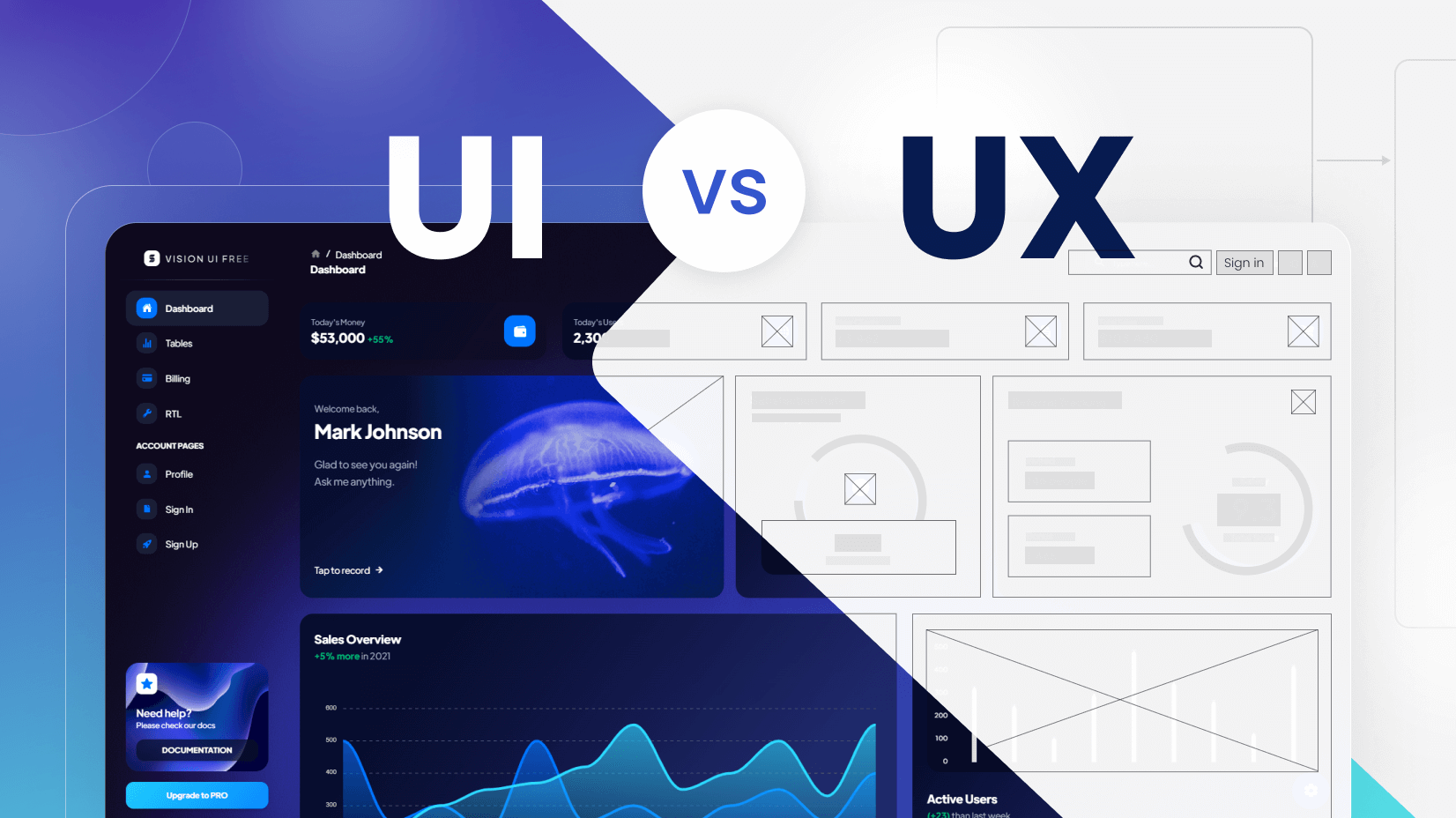
Brand Strategy vs. UI/UX Design: How They Complement Each Other
In today’s digital world, brand strategy and UI/UX design are two crucial pillars for creating successful products and meaningful user experiences. While they serve different functions, both are deeply interconnected, working together to build a consistent, engaging, and user-focused product. But what are the differences, and how do these two areas complement each other?
Let’s explore the relationship between brand strategy and UI/UX design, how they intersect, and why harmonizing them is essential for business success.
1. Understanding Brand Strategy
At its core, brand strategy is the long-term plan for developing a brand to achieve specific goals. It is the blueprint that defines what a brand stands for, its values, messaging, and how it positions itself in the market. Some key elements include:
- Brand Identity: The visual elements (logo, color scheme, typography, etc.) that make your brand instantly recognizable.
- Brand Voice: The personality, tone, and style of communication your brand uses to connect with the audience.
- Target Audience: Understanding the demographics and psychographics of the customers you want to attract.
- Positioning: How you differentiate yourself from competitors and occupy a unique space in the market.
- Brand Values: The principles and beliefs that define your brand’s purpose.
Brand strategy is about consistency in messaging and ensuring that the brand’s story resonates with the target audience across all touchpoints.
2. What is UI/UX Design?
UI (User Interface) design and UX (User Experience) design focus on creating products that are visually appealing, functional, and easy to use. UI design is about the visual elements users interact with, such as buttons, icons, and layouts, while UX design is about the overall feel and user journey within the product. Core aspects include:
- Usability: Ensuring the product is intuitive and simple to navigate.
- Accessibility: Making sure the design is usable for all users, including those with disabilities.
- Interaction Design: Crafting how users interact with a product, such as gestures, clicks, and animations.
- Information Architecture: Organizing and structuring content to guide users through the interface seamlessly.
- Prototyping and Testing: Creating mockups and gathering user feedback to refine the product.
UI/UX design is user-focused, with the goal of delivering a smooth and satisfying experience that meets users’ needs and keeps them engaged with the brand.
3. How Brand Strategy and UI/UX Design Differ
While both brand strategy and UI/UX design play key roles in shaping how users experience a product, they operate on different planes:
- Focus: Brand strategy is about building a brand identity and emotional connection with the target audience, while UI/UX design is focused on usability, functionality, and the user’s journey within a product.
- Scope: Brand strategy extends beyond digital products to include marketing, communications, and customer service. UI/UX design, on the other hand, is more focused on the digital experience, such as websites, apps, and software.
- Timing: Brand strategy is typically established first and serves as the foundation upon which UI/UX design is built. Without a clear brand strategy, UI/UX design can lack direction and cohesion.
Despite these differences, the two are deeply intertwined. UI/UX design brings brand strategy to life by translating it into an engaging digital experience.
4. The Intersection: How UI/UX Design Supports Brand Strategy
For a brand to be successful, it must deliver a consistent and seamless experience across all platforms. UI/UX design plays a pivotal role in ensuring that a brand’s identity, values, and voice are clearly communicated in its digital products. Here’s how:
Consistency in Visual Design: A key component of brand strategy is creating a recognizable identity through visual elements such as logos, colors, and fonts. UI designers use these elements in interfaces, ensuring that the digital experience feels consistent with the brand’s identity. This strengthens brand recognition and trust.
Emotional Connection: UX design focuses on how a product feels to the user, directly impacting how users emotionally connect with the brand. A well-designed UX creates a positive, memorable experience, reinforcing the brand’s value and encouraging user loyalty. For example, Apple’s minimalist UX complements its brand promise of elegance and simplicity.
Storytelling Through Interaction: UI/UX design offers a unique opportunity to tell a brand’s story through interactive elements. Microinteractions, animations, and design elements that align with brand values can further immerse users in the brand experience. Think of how brands like Nike incorporate bold, energetic design elements that mirror their brand’s active, empowering persona.
5. Creating a Unified Experience
To create a seamless experience between brand strategy and UI/UX design, the following steps are key:
Start with a Strong Brand Foundation: Before beginning any UI/UX design process, a clear brand strategy should be in place. This includes defining your brand’s voice, values, and positioning. Once the strategy is clear, it becomes easier to translate it into a digital experience.
Design with Brand Values in Mind: Ensure that every design decision, whether it’s related to typography, layout, or interaction, aligns with the brand’s values. For example, a luxury brand should use sleek and sophisticated designs, while a playful, youth-focused brand might opt for bold, colorful, and dynamic elements.
Maintain Consistency Across Platforms: A brand’s identity should remain cohesive across all platforms—whether it’s a website, app, or social media page. Consistency reinforces trust and familiarity, which are critical for user retention. The UI/UX design must reflect the same visual and tonal consistency as all other brand touchpoints.
Incorporate User Feedback: While brand strategy lays the groundwork for what the brand stands for, user feedback is essential for refining the UX. By testing prototypes with real users, you ensure that your product is not only on-brand but also meets users’ needs effectively.
6. How UI/UX Can Influence Brand Strategy
Interestingly, the relationship between UI/UX design and brand strategy isn’t one-way. Feedback and insights gathered through UI/UX processes can also shape a brand’s strategy. Here’s how:
User-Centric Insights: UX research uncovers valuable information about users’ preferences, pain points, and expectations. These insights can influence a brand’s messaging and positioning, ensuring that the brand remains aligned with what the audience cares about.
Adapting to Changing Technologies: As UI/UX design evolves with new technologies and trends, brands may need to adjust their strategy to stay relevant. For example, with the rise of voice-activated interfaces, brands must rethink how their identity translates to voice experiences, which may involve adjusting brand messaging for audio-first interactions.
Digital-First Branding: For companies that primarily operate in digital spaces, UI/UX design can inform how a brand’s identity should be shaped from the start. The way users interact with a brand online could become a central element of its brand strategy, especially if the product is primarily experienced through apps or websites.
7. Examples of Brands Effectively Merging UI/UX and Brand Strategy
Airbnb: Airbnb’s brand strategy emphasizes belonging, community, and adventure. Its UI/UX design reinforces this by creating a user-friendly, seamless experience for both hosts and guests. The interface uses clean, friendly visuals and language that reflect the brand’s inclusive, welcoming ethos.
Spotify: As a brand that focuses on personalized music experiences, Spotify’s UX is built around user preferences. The design is sleek, minimal, and constantly adapts based on user feedback, which aligns with its brand promise of making music personal and accessible to everyone.
Slack: Slack’s brand strategy revolves around simplifying communication for teams. Its UI/UX design complements this by offering a clean, intuitive interface that fosters ease of use, allowing users to focus on conversations rather than navigating complicated menus.
8. Key Takeaways
In conclusion, while brand strategy and UI/UX design serve different functions, they are interdependent. A strong brand strategy guides the design process, ensuring that the digital experience aligns with the brand’s identity and values. At the same time, great UI/UX design enhances the brand by providing a positive user experience, strengthening emotional connections, and ensuring consistency across all platforms.
For businesses, it’s essential to align these two elements to create a cohesive and engaging experience for users. The more aligned the brand strategy is with UI/UX design, the more effective the brand will be at communicating its message and retaining loyal users.

